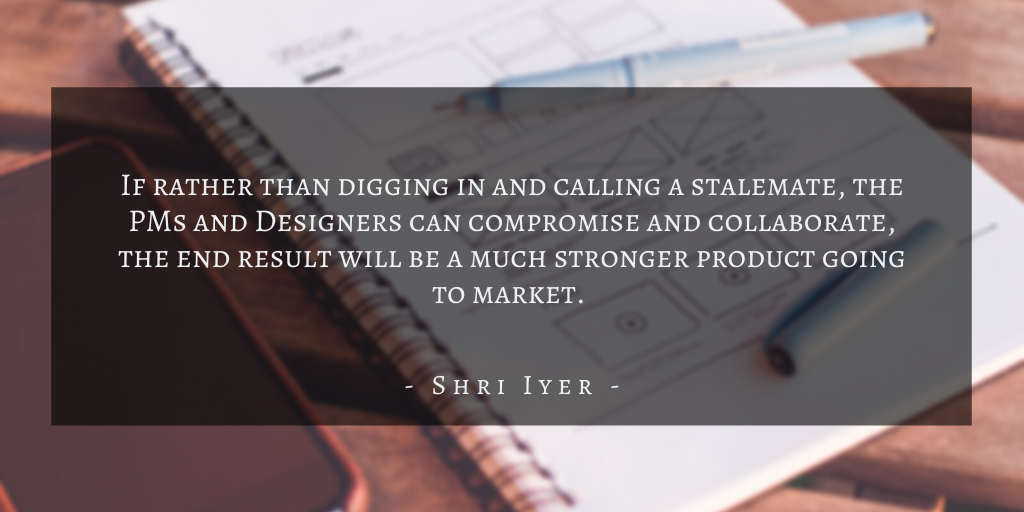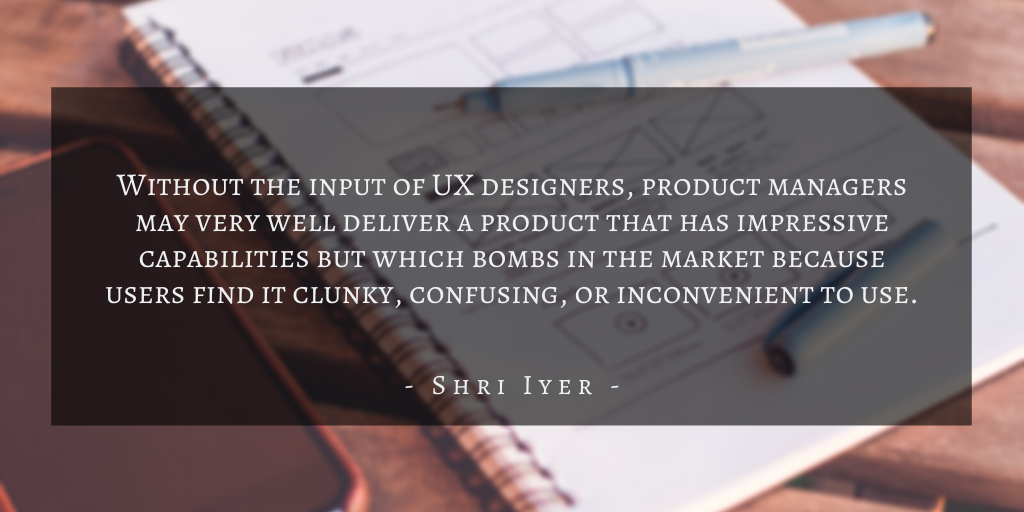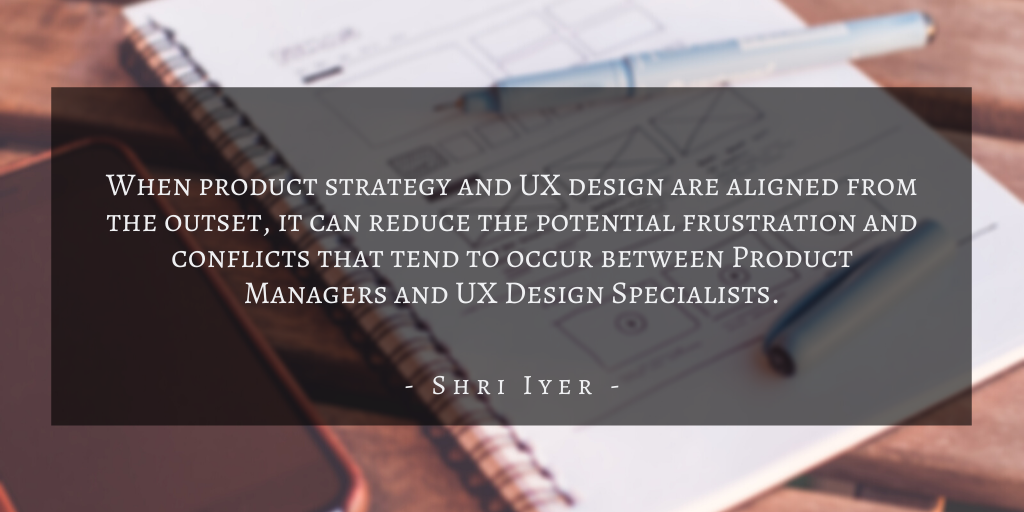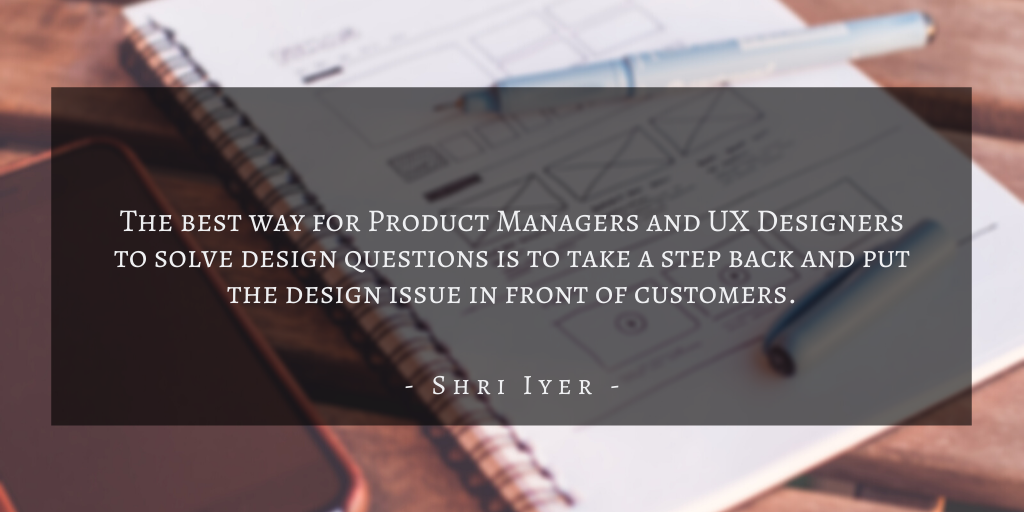In the product world, there are product managers and UX designers – each plays a critical role in the product life cycle. Product managers often take the lead in developing a strategy for bringing the product to market, determining a timeline for production, and prioritizing features. UX design specialists (or product designers) serve as customer advocates by researching user needs and providing insights that guide the overall development of the product. They utilize user-centered design best practices and focus on creating a seamless and intuitive experience for the customer. Without a robust collaborative effort between these two roles, the product will suffer, and users will find another means of solving their problem.
As orchestrators of collaboration across teams, product managers may be better positioned to provide industry, market, or business insights. In contrast, UX specialists may have a more direct finger on the pulse of user needs. As a result of these sometimes opposing perspectives, there can be tension and discord between individuals in these two roles. However, such conflict doesn’t have to result in an all-out war. If rather than digging in and calling a stalemate, the PMs and Designers can compromise and collaborate, the end result will be a much stronger product going to market.

Despite the conflicts that can arise between Product Managers and UX Designers (UXDs), it’s good to keep in mind that both are on the same team. While these two roles may seem at odds on the surface, they share a singular goal of creating or improving a product that provides the best solution to their customers’ problem(s). Each role relies heavily on customer research and user data to garner insights and anticipate users’ needs. And both roles require a customer-centric focus to be successful.
Why Product Managers and User Experience Designers Need to Work Together
The process of bringing a new product or feature to market requires the knowledge and talents of many professionals. As much as a product manager is in charge of balancing the needs and desires of all stakeholders, from company execs, developers, UX designers, all the way to end-users, they cannot do it on their own. They must consider, prioritize, and incorporate a great deal of feedback throughout the process of bringing new products or features to the market. As an advocate for consumers, UX designers have powerful insights into how users think and feel about a product or feature. Without the input of UX designers, product managers may very well deliver a product that has impressive capabilities but which bombs in the market because users find it clunky, confusing, or inconvenient to use.

When product managers overlook UXD, they focus primarily on the “design” portion of the role when their view of UXD should emphasize the user experience aspect. While UX designers may build out wireframes and incorporate a branded color scheme, that is not their sole contribution to a product, nor should it be. Because user experience affects every aspect of a product or feature, the UXD needs to be involved throughout the product development process.
In reviewing the responsibilities of UX designers and PMs, there can often be considerable overlap. This can result in confusion and wasted resources, time, and effort if collaboration and communication aren’t prioritized. And while these similarities are significant, both parties possess perspectives, information, and skills that are particular to their roles.
Bringing both sides together at the very inception of a product or feature allows both parties to share information about the problem to be solved, the scope of the product, user research insights, budget, time constraints, and organizational agenda. This transparency allows for greater empathy and understanding of the other party’s priorities. This also sets the stage for co-ownership of the end product; whether the result is success or failure, both parties share the responsibility.
How PMs and UX Designers Can Work Together
So what can Product Managers and UX designers do to bring about a more gestalt approach to product design, development, and launch? Start by acknowledging each other’s expertise to develop trust and mutual respect. Being genuinely curious and working to understand each other’s thought processes and why they make the decisions they do can go a long way in developing a good working relationship.
When product strategy and UX design are aligned from the outset, it can reduce the potential frustration and conflicts that tend to occur between Product Managers and UX Design Specialists. Inviting UX Designers into scrum meetings can be beneficial for several reasons. First, it allows UX to see the rationale behind the product strategy. And for Product Managers, it enables them to gain familiarity with the UX mindset and the language used by user experience designers.

When collaboration begins early in the design development stage, UXDs can contribute valuable insights from their user experience research tools. This will give PMs a better understanding of what features or products will bring the most value. This also allows for a feedback loop that promotes iterative improvements as the product cycle progresses.
One other benefit to this early collaboration effort is that Product Managers can take their newfound insights into the emotional elements of design and communicate them to stakeholders to ensure a commitment to a well-designed product.

When conflict occurs within the collaborative relationship, it’s critical to keep in mind that it is perfectly natural to disagree.The best way for Product Managers and UX Designers to solve design questions is to take a step back and put the design issue in front of customers. Let them decide which path works best for them. Once you do that, you can then decide on a course of action based on the feedback received. Keeping decisions data-driven means that neither side can go on a powertrip. Not only will it keep the collaborative relationship strong, but it will also result in the best possible product being delivered to users.
Conclusion
Establishing a mutually beneficial and productive collaborative relationship between Product Management and UX Design benefits all stakeholders. Such relationships should be the gold standard for product development. When UX Design and Product Management work together, they create a force to be reckoned with and a more enjoyable working environment for all.

